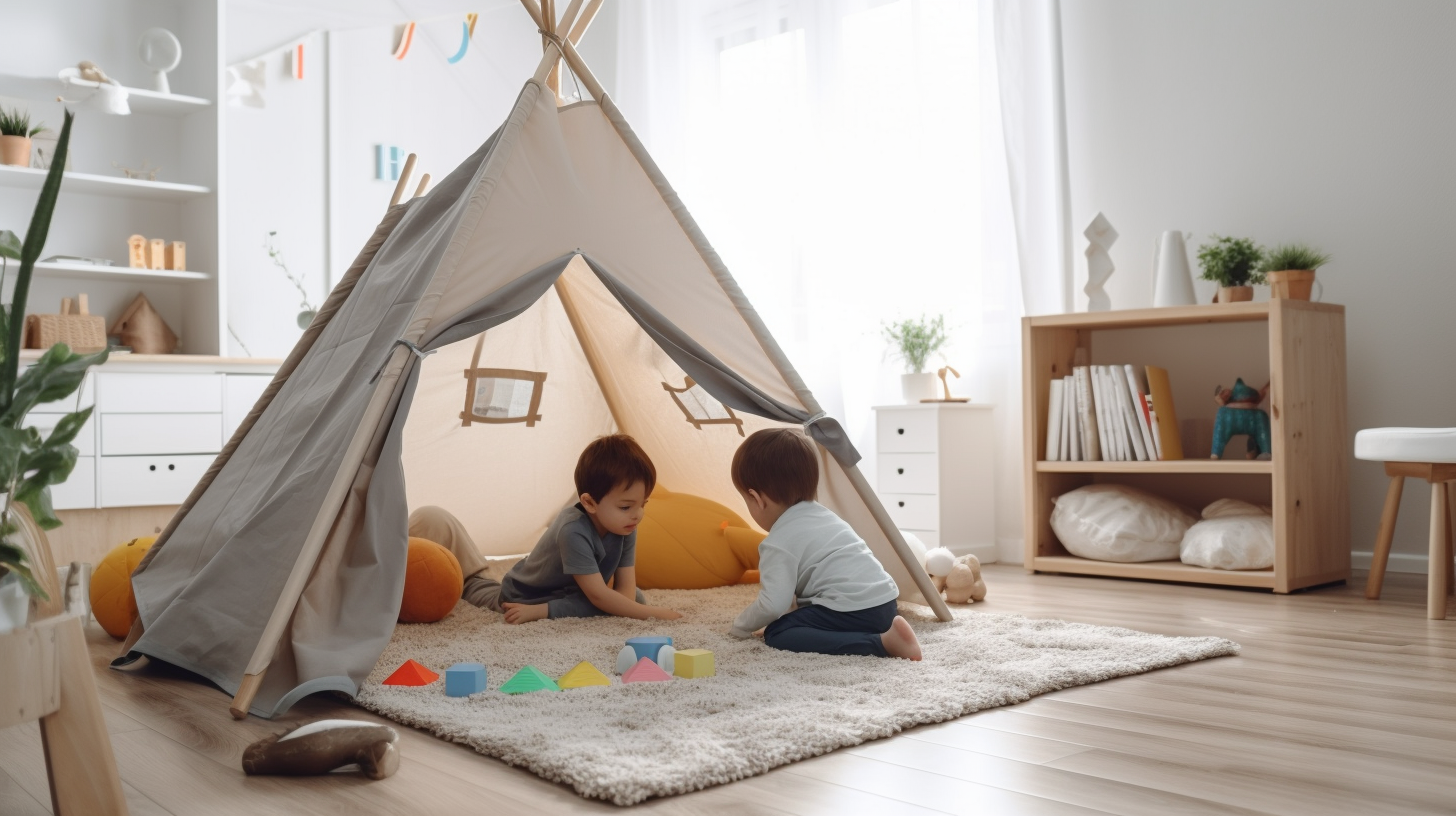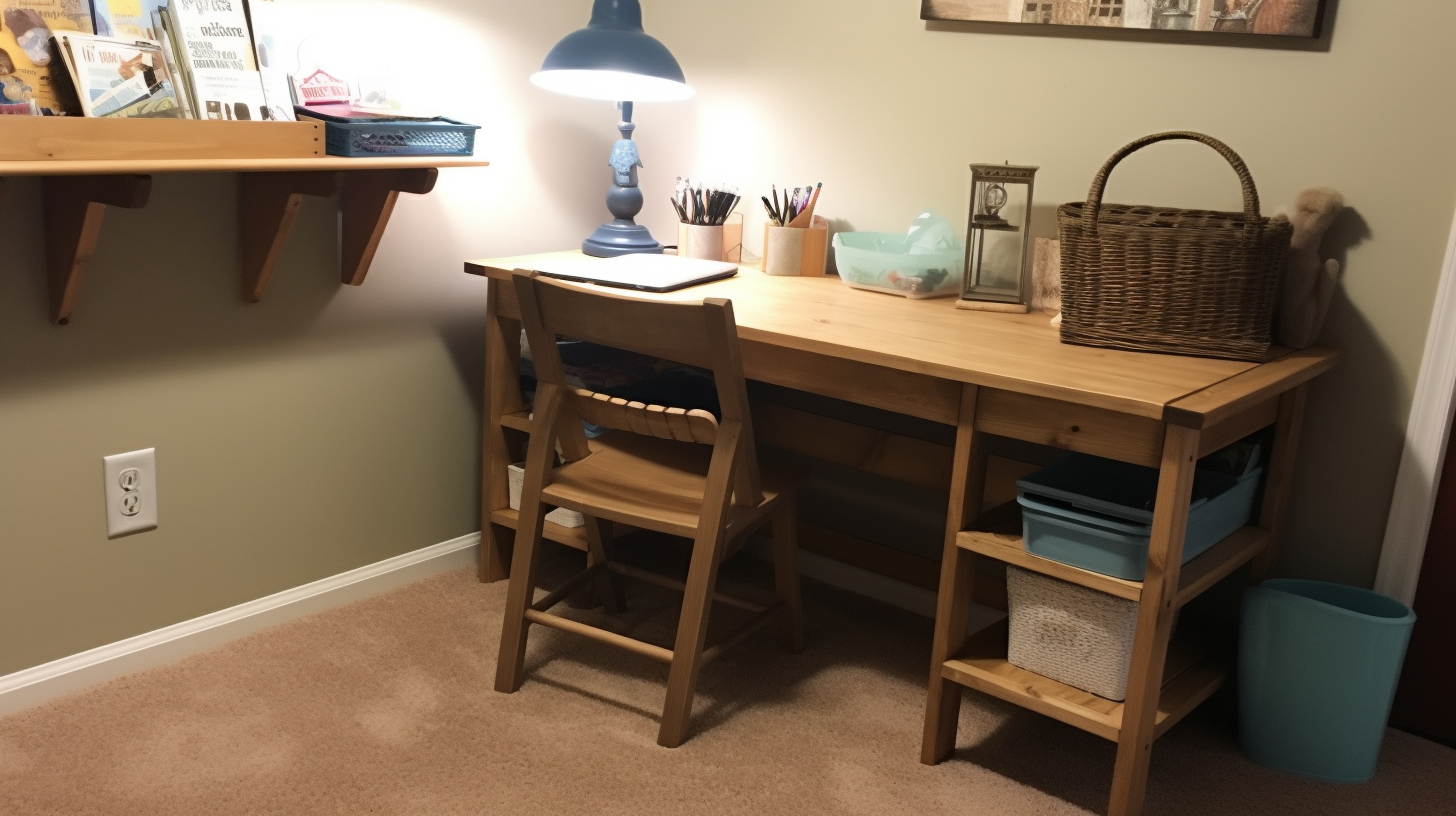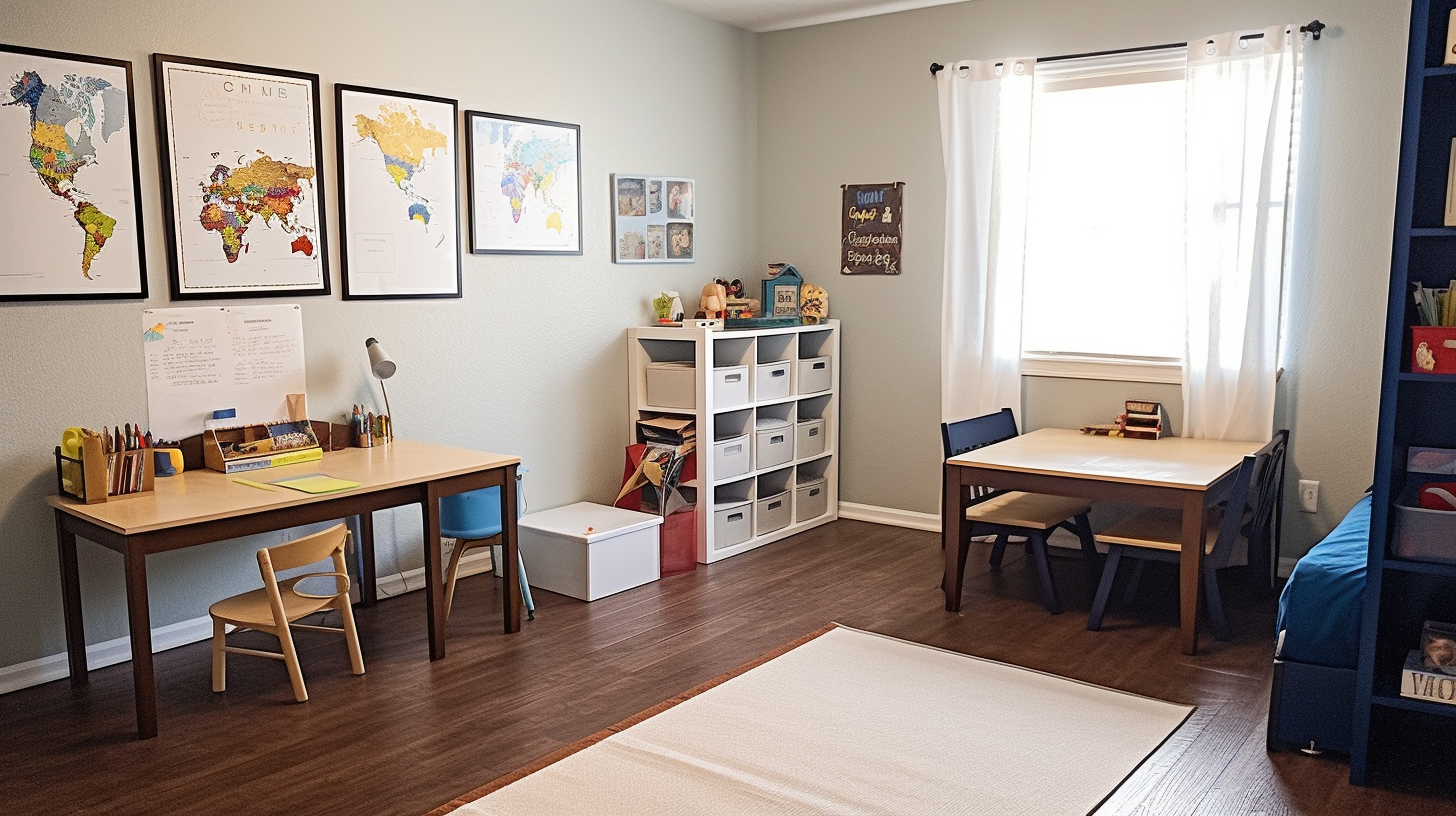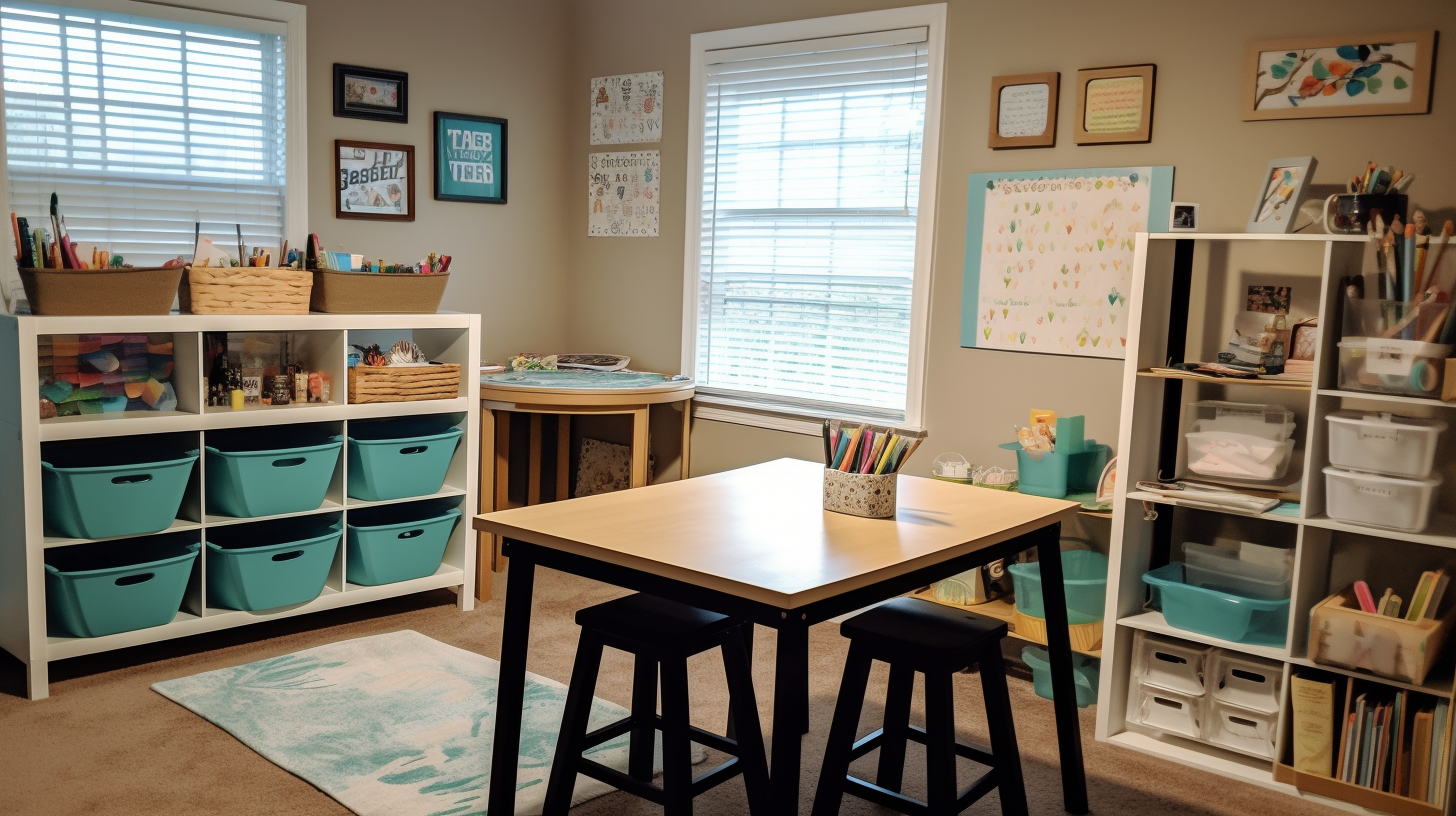The need for a mobile or flexible homeschooling space has become more apparent with the advent of distance learning due to the impact of the COVID-19 pandemic. For families that are constantly on the go, travel or move around the house, creating a designated homeschool space has become an essential requirement for in-person instruction or virtual classes. A home-based, flexible, and mobile learning environment should be designed to provide students with the tools, resources, and space they need to study effectively and avoid distractions. This can include setting up a designated workspace in different rooms around the house, portable furniture, and items that can be moved around the home. Additionally, technology like laptops, mobile hotspots, online educational resources, and teleconferencing software can help facilitate a more personalized and immersive learning experience. With proper planning and implementation, families can construct an effective mobile homeschooling space for studying, learning, and teaching on the go.

Creating a mobile or flexible homeschooling space is relatively easy. It involves setting up a laptop or computer station and using online resources and programs to access lessons and grade school materials. You can also create physical learning spaces almost everywhere, depending on the type of school project you are working on. Good options for portable homeschooling include using soundproof headphones, having a whiteboard or portable chalkboard and setting up a comfortable workspace in any given location. It is also important to consider purchasing digital resources and programs that make online learning easier. Last but not least, be sure to include home-based activities such as games and physical activities to enhance your homeschooling experience.
Benefits of Portable Homeschooling
Creating a mobile or flexible homeschooling space for traveling or moving around the house can provide many benefits for homeschooling families.
1. Flexibility: One of the biggest advantages of a flexible homeschooling space is the ability to customize the learning environment. It can be adapted to different places and adapted to different levels of learning. This gives parents the flexibility of developing specific learning activities that respond to their child’s needs.
2. Cost-effectiveness: A mobile space for homeschooling can be a cost-effective way to provide a quality education. Since the materials for the learning activities are portable, the expenses associated with them can be minimized.
3. Travel: A mobile or flexible homeschooling space gives homeschooling families the opportunity to learn and explore in new places with their children. It can be adapted to a variety of locations, allowing families to travel and explore new places as they learn.
4. Organization: Having a flexible and portable learning space is also a great way to keep things organized. It allows parents to arrange the learning materials and activities in such a way that they can easily be accessed while on the go.
5. Variety: Having a flexible learning space adds variety to the homeschooling experience. It can be used in different ways to explore different topics and learning styles, giving children the opportunity to learn in new and exciting ways.
Tips for Creating a Portable Homeschooling Space
- Invest in lightweight and foldable furniture: Look for furniture options that are lightweight and easy to move around and set up. Options such as a foldable desk/table, easy-to-carry chairs, stackable storage boxes, and collapsible shelves are ideal for a movable homeschooling space.2. Use collapsible wall dividers: If you need to separate different teaching areas but don’t want to deal with heavy walls, then collapsible wall dividers are good choices. Look for dividers that can be easily assembled and disassembled as needed.
3. Utilize overhead projectors: To save space and create a more immersive learning environment, look for overhead projectors that can be mounted to the wall or be set up on a table top. They’re great options for displaying images, presentations, and videos for your student to follow along.
4. Set up a whiteboard or chalkboard: A movable whiteboard or chalkboard is another excellent teaching tool. Look for lightweight options that can be easily moved around the house and set up.
5. Implement soft flooring and wall coverings: Look for soft and comfortable flooring and wall coverings that can be moved around the house. This will help create a welcoming teaching environment no matter where it’s set up.
6. Wear headphones/earbuds: Headphones and earbuds are great for allowing you to focus on individualized instruction without disturbing others in the house.

Utilize the Living Room
Creating a mobile or flexible homeschooling space in the living room is a great way to ensure that your child has access to their studies no matter where they are in the house. To create this space, you’ll want to start by utilizing the living room’s furniture. Move furniture around to create a comfortable seating area. This seating area should be close to an outlet so that your child has access to power for their laptop or device. If possible, set up a desk and chair in the space that’s comfortable for your child. If your living room has a TV, you can attach it to a laptop, granting access to digital textbooks and online video resources. You should also make sure any other materials your child needs for their studies, such as textbooks and pencils, are close at hand. Once you have your setup ready, you can designate your living room a homeschooling space during the times your child needs to study.
Establish a Designated Home School Storage Solution
Creating a designated storage solution for homeschooling on the go is a great way to keep all of your materials organized and accessible. This can be achieved by investing in storage containers, shelves, and bags that are portable and easily moved without compromising their organizational value.
For starters, invest in a rolling cart which has multiple compartments that can be used to store textbooks, papers, pencils, markers, notebooks, and other school supplies. This storage solution is perfect for transporting around the house while still keeping all the materials organized. Additionally, consider using colored bins or folders to designate certain materials for different courses or classes. This way, it is easy to access what is needed without having to search around for it.
Finally, for those with multiple mobile kids, labeling backpacks or lunch boxes could be used to easily differentiate between each child’s homework or materials. This ensures that each student’s supplies are quickly accessible when needed. Creating a designated storage solution is a great way to create a mobile, flexible homeschooling space, while also ensuring everything is organized and easily accessible.
Stop Clutter at the Door
Creating a mobile or flexible homeschooling space for traveling or moving around the house is a great way to keep your home organized during homeschooling. Clutter at the door can become a major issue if not addressed in some way. A great way to ensure your home remains clutter free is to create a designated area where all the homeschooling materials can be stored. You can have each student select a specific backpack, bin, or storage container to hold their materials that they can move around the house with them. Additionally, when entering the house make an effort to have each student put away all their materials in the same location. This can help ensure that clutter doesn’t accumulate in different parts of the house. Furthermore, having a designated space for homeschooling can help keep the area clean and tidy.
Other Tips for Portable Homeschooling
- Invest in multi-functional furniture: Invest in furniture pieces that have multiple purposes or can be moved around easily. Consider portable desks or laptop stands that can easily be moved from one room to another.2. Incorporate flexible storage solutions: So that you don’t have to lug around boxes of books and supplies everywhere, look for storage solutions such as shelves and baskets that can be easily moved and cleared.
3. Create a central filing system: Set up an organizational system with easily portable folders, notebooks, and labels that can be taken to each homeschooling space and keep all your documents in one place.
4. Set up a central charging station: Invest in a charging station that can be easily moved from one space to the next. This will ensure all devices are charged and ready to go.
5. Utilize online tools: Utilize tools and services such as Google Drive and Dropbox to store digital documents and schoolwork and make them easily accessible from any device.
6. Use flexible seating: Portable seating, such as folding mats and bean bags, are great for taking anywhere and creating a space that works both for studying and play.
7. Stick to the basics: Keep things simple and only bring the essentials with you when you move around. That way you can focus on learning and spend less time on setup.

Turn Cleanup Time into Math-Focused Fun
Creating a mobile or flexible homeschooling space for traveling or moving around the house can be a lot of fun. Incorporate math into the clean up process by setting a timer and challenging your homeschooler(s) to beat the clock or see who can clean up more quickly. Try to reward speed and accuracy by using fun math-related motivators such as math or educational based prizes for the fastest or most accurate clean up. Design games like matching and sorting items into categories as part of clean up, create a pattern for the clean-up process, see how many items they can clean in a given amount of time, and depending on the age, ask them to sort by sizes, order from largest to smallest, etc. All of these activities can help turn cleanup time into a fun and engaging math-focused activity.
Look for Local Opportunity
Local opportunity may be an important part of creating a mobile or flexible homeschooling space for traveling or moving around the house. Look for local events, such as homeschooling fairs, open houses, and support groups that may offer resources, ideas, and support. These may be held by a local homeschooling organization, a university, or a local business. This should provide valuable information on curriculum, products, and teaching strategies.
Additionally, look for opportunities to “tutor swap” which allows you and other local families to trade teaching duties depending on each family’s individual needs and strengths. This can also be a great way to learn from each other.
Finally, another local opportunity is to look into whether there are online classes that can be taken via independent study. Many homeschoolers utilize online courses as a way to supplement their physical courses. By taking online classes, you can work at a pace that fits your family’s needs.
Have Fun with Field Trips
Creating a mobile or flexible homeschooling space for traveling or moving around the house can be an incredibly fun and creative way to mix up the traditional “classroom” routine. Field trips can be a great way to make homeschooling more interesting and educational. Not only do field trips provide a different setting for students, they also provide an added bonus of hands-on learning and experience.
Start by considering destinations that will give your students a unique learning environment. Depending on your student’s age, studies and interests, possible field trips could include trips to local museums and educational centers, nature centers, historic sites and landmarks, zoos and aquariums, and more. Take advantage of discounts and passes offered by educational associations or local libraries.
When selecting an outing, keep in mind the importance of safety as well as the appropriateness of the field trip to the age of the student and the purpose of the trip. When possible, consider having other parents and students come along to make it more of a learning community.
You can also make the field trip part of the “classroom” with pre- and post-trip activities. Ask your students to research different sites ahead of time to get the most out of their visit. Afterward, strongly encourage students to challenge themselves to use what they learned on the field trip in projects and writing assignments.

Final Thoughts
Creating a mobile or flexible homeschooling space can be done by utilizing storage solutions, such as rolling carts with drawers, to store supplies and textbooks. Additionally, utilizing technology, such as video conferencing, laptops, tablets, and other devices, can make the learning process more efficient when it comes to moving from one room to another. Tools, such as online applications and programs, can also be utilized to supplement any worksheets or other resources being taught. Last, having a designated storage system for educational materials can also help in making the transition from one area of the house to another, easier.
